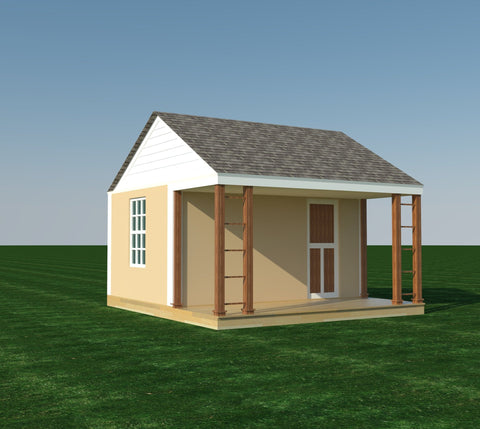24' X 12' Settlers Home Tiny House Cabin With Loft Plans DIY Plan.
These DIY plans will show you how to build a 12' X 24' tiny house Cabin With Loft. This home features a sleeping loft in the design. Great for homesteaders.
What is a Tiny Settlers House?
If you're thinking about a tiny house for your next vacation, read this article to learn more. You'll learn about the size and materials of a tiny home, how much it will cost, and where to stay. It's a great way to save money while staying in a cozy place. There are several different styles of tiny homes to choose from. In this article, we'll discuss the most popular types.
Size
A typical size of a tiny settler's house is around 400 square feet. Some homes are even smaller, averaging just 80 square feet. Tiny houses have been around for hundreds of years. They evolved from the shelters of the early settlers, from the Inuit to the Sioux. The earliest settlers used tipis for shelter, which were waterproof and heat-resistant. Later, shot gun houses, which are very small homes that look like large ones, evolved in the 1800s.
Materials
Before you start building a tiny house, make sure that you have all of the necessary materials on hand. Building materials for tiny homes can be found at many thrift stores or Habitat Restores. The building materials needed for a tiny house are basic, like plywood and framing, but you do not need to buy any interior decorations yet. Here are some ideas for materials that you can use. These include old tires, old refrigerators, and even a school bus.
To make your tiny house extra-insulated, choose polystyrene boards. They offer the right amount of insulation, and are easy to cut to fit tight spaces. Polystyrene boards can be used to insulate the floor, walls, and roof. If you're planning on installing the tiny house in a crawl space, use spray foam. These products are much cheaper than traditional blown-in insulation and offer better insulation.
Cost
There are two kinds of tiny houses: portable and permanent. While portable tiny houses are built on trailers, the latter are constructed on a traditional foundation. Portable tiny houses do not have to meet minimum square footage requirements. However, they are heavy and require a beefy trailer. Portable tiny houses may cost from $4,500 to $9,000, which can be a considerable investment. While these homes do not pay real estate property taxes, they may be considered personal property, reducing the cost.
The cost of a tiny settler's house can vary significantly. The average price for a tiny house is around $300 per square foot. However, this cost can go as high as $400 if the builder adds custom layouts and customizations. Generally, the smaller the house, the higher the price per square foot will be. For this reason, you should know the area and building permit requirements before deciding on the exact cost of a tiny home.
Place to stay
If you're looking for a unique way to travel, a Place to Stay in a Tiny Settlers House may be just what you need. Located in York, Settlers House York is a short walk from the Residency Museum and York Motor Museum. It also offers amenities such as express check-in, luggage storage, and laundry facilities. There's also a meeting room, and free self-parking.
For those traveling with a small family or couple, a Place to Stay in a Tiny Settlers House may be the perfect accommodation. There are two separate bedrooms with king-sized beds, a bathroom on opposite ends of the home, and a cable television with a selection of older movies. The property also comes with linens and towels, a refrigerator, microwave, and a charcoal barbecue.
All DIY plans are designed by Ben Stone. Ben is a retired Engineer in Canada. Ben also drafts these himself using the latest AutoCAD software to ensure accuracy. He studied Engineering back in the early 1980's. After over 30 years in the Construction industry he developed a passion for building cool items around his farm and cabin. These are great DIY projects. With a little skill anybody can Do It Yourself. Ben is always a email away if you have any questions while building one of his projects. He is adding new plans all the time.









